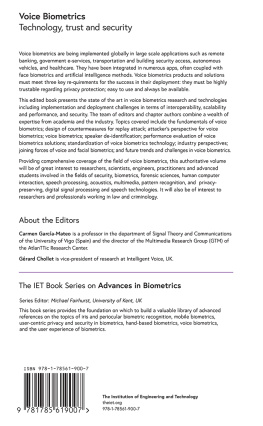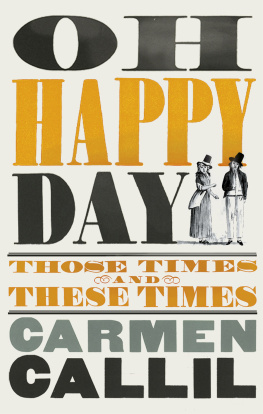COLLECTED WRITINGS OF CARMEN BLACKER
This edition co-published by Japan Library and Edition Synapse, 2000
_____________
Reprinted 2004
By Routledge
2 Park Square, Milton Park,
Abingdon, Oxon, OX14 4RN
Transferred to Digital Printing 2006
Routledge is an imprint of the Taylor & Francis Group
ISBN (Blacker) 1-873410-92-1 (vol.1)
(Cortazzi) 1-873410-93-X (vol.2)
(Shillony) 1-873410-99-9 (vol.3)
Vols. 1-3 ISBN 1-873410-96-4 (3-vols. Set)
All rights reserved. No part of this publication may be reproduced, stored in a retrieval system, or transmitted in any form or by any means, without prior permission in writing from the Publishers, except for the use of short extracts in criticism.
British Library Cataloguing in Publication Data
A CIP catalogue entry for this book is available from the British Library
_____________
Edition Synapse
2-7-6 Uchikanda
Chiyoda-ku
Tokyo 101, Japan
ISBN (Blacker) 4-931444-28-8 (vol.1)
(Cortazzi) 4-931444-29-6 (vol.2)
(Shillony) 4-931444-30-X (vol.3)
Vols. 1-3 ISBN 4-931444-27-X (3 vols. Set)
ISBN 978-1-134251-53-7 (ePub)
Typeset in Plantin 11 on 12 point by Bookman, Hayes, Middlesex, England
Publishers Note
The publisher has gone to great lengths to ensure the quality of this reprint but points out that some imperfections in the original may be apparent
Printed and bound by CPI Antony Rowe, Eastbourne
T HIS VOLUME contains a miscellaneous selection of the papers I have written and the lectures I have delivered during the last forty-five years. The earliest in time is a lecture I gave to the Japan Society shortly after returning from Japan in 1953. It describes my adventures as a student in Kei University, and as a lay aspirant in the Zen temple of Engakuji in Kamakura. The most recent is a lecture I gave in 1998, in Ueno Gakuen University in Tokyo, on the subject of the three great early Japanologists, Chamberlain, Aston and Satow. The lecture was part of the programme to celebrate British Year, and in it I tried to show how all students of Japanese during the past century, not least myself, owed an incomparable debt of gratitude to these three remarkable Englishmen.
The other papers are loosely divided into categories of Religion, Myth and Folklore and Portraits and Recollections. Those in the first group reflect my interest in Buddhism, which was roused during my first visit to Japan in the early 1950s, and which has remained a guiding inspiration ever since. From Buddhism there arose the need to understand the older religions in Japan, many of them hidden behind a perplexing nomenclature, and to undertake the travels, observations and chsa (field work) which eventually went to form my book The Catalpa Bow, published in 1975, and most recently (1999) republished in the Japan Library Classic Paperbacks series. Here I tried to assemble and describe the rituals and practices in Japan which would not be improperly called shamanistic.
Behind all these disciplines and initiations, however, I realized that there lay folklore and myth which are all part of that subtle web which constitutes religion in Japan; which often dives underground, but surfaces again, and can best be understood by the Buddhist symbol of Indras Net. At each knot in the fine mesh is a jewel, which reflects simultaneously all the other jewels in its many faces.
The reader will accordingly find papers on myth and folklore in this section, as well as on Buddhist practice and aspiration. I should perhaps remind readers today that in 1953, when I gave my first paper to the Japan Society, little was known about Buddhism in England, least of all about Zen. The Beat Generation had not yet appeared to popularize and parody Zen meditations and practices, nor had Alan Watts sounded his message to an all too receptive audience... that all you needed to do to experience Zen enlightenment was to let go. What I told the Japan Society then may seem hackneyed now, but at the time was little known to scarcely any member other than Christmas Humphreys.
The section which I have called Portraits and Recollections features some notable characters, nearly all of whom I was privileged to meet or even know. There is a great deal to be said for being old enough to have heard Arthur Waley lecture on the Chinese Cinderella story and to have watched him fry cutlets; or to have listened to Yoshio Markino in his old age recollecting his adventures with the suffragettes in 1912; or to have been taught how to write kanji by General Piggott; or to have had tea with Marie Stopes. The only characters on my list whom I have not been lucky enough to meet were Laurence Oliphant, who died in 1889, and Minakata Kumagusu, whose erudition, ferocious energy and eccentric habits have long intrigued me, but who died in 1941.
There is much to be said also, and surely Hugh Cortazzi and Ron Dore and the others in our notable generation would agree with me, for being old enough to have seen Japan before tower blocks, computers, television screens and mobile telephones so drastically changed the scene. And when there was still a sense of what is meant by that untranslateable word yoy, unhurried leisure from which may spring creative inspiration. B.H. Chamberlain wrote that old Japan was like an oyster; force it open and many things beautiful and precious die. He might have said the same of the changes that have taken place since those of my generation first saw Japan.
I cannot remember why I decided, at the age of about twelve, that when I grew up I wanted to learn Japanese. In the late 1930s Japan was so remote and inaccessible that this seemed an odd ambition for a child. But what was my luck soon afterwards to be introduced to General Piggott, one of the few Englishmen in the country who spoke and wrote fluent and elegant Japanese. And furthermore to discover that he lived only a few miles away from our house, and was prepared to give me Japanese lessons in the school holidays. So, during the summer of 1941 we read Vaccaris Grammar, and the Japanese school reader which began with the words Saita saita sakura ga saita. And, distinguished calligrapher that he was, he did his best to teach me how to write with a brush. How much I regret, nearly sixty years later, my narrow concentration on verbs and particles, and my jejune failure to draw him out about his childhood in Tokyo during the 1880s. But little did I realize then that he was to represent a type of human being who was very soon to become extinct.
The terrible day in December 1941 not only proved General Piggott wrong, who had always refused to countenance any possibility of war, it also revealed how woefully inadequate were the number of people in this country who could read or speak the language of the new enemy. But the School of Oriental Studies in London was quick to react to the emergency, and soon crash courses were being devised, both for clever boys who had proved their brilliance at Latin and Greek, and also for service students in battledress khaki and blue.
I myself was soon sent to Bletchley Park, where I remained until 1945. I then escaped and helped in the teaching of the classes of soldiers and sailors at the School, as it was then called. Many of these are now bishops, ambassadors, professors and captains of industry. And at the same time, in company with Ron Dore and Douglas Mills, I studied for one of the earliest BA Honours degrees in Japanese to be devised and awarded. It included a paper in Japanese history, for which we were warned that no instruction could be given.












